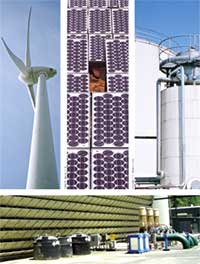Punjab Green Hydrogen Policy
<p>The Punjab Energy Development Agency has released a draft green hydrogen policy aiming to achieve a green hydrogen and ammonia production capacity of 100 kilo tonnes per annum by 2030. The policy proposes
<p>The Punjab Energy Development Agency has released a draft green hydrogen policy aiming to achieve a green hydrogen and ammonia production capacity of 100 kilo tonnes per annum by 2030. The policy proposes
MNES anticipates that its financing in the last two years of the Eighth Plan will be augmented by about Rs 1,300 crore, with the additional funding coming mainly as external assistance from the World Bank and GEF.
According to the 2001 census, about 43.5% of the households have been provided with electricity connections. This has gone up from 30.5% at the time of the 1991 census. The vast majority of rural population, however, still has no access to electricity and is dependent on kerosene lamps and lanterns. Jan-Mar 2005
This report provides a list of recommendations to the policy makers in China on improving the effectiveness of renewable energy policies domestically. This report was commissioned by REN21 and produced in collaboration with the Chinese Renewable Energy Industry Association (CREIA) and technology experts from various Chinese research institutions and the private sector.

The International Conference for Renewable Energies is to be held in Bonn, Germany. But here is a sector dwarfed by fossil fuels, and although governments can proactively root for renewables, and some have, the options given to developing countries are qu
The present study is comprised of energy value, component energy, total energy content and net annual energy production of 6 years old monoculture plantation stand of Acacia auriculiformis A. Cunn.ex. Benth at Saresar Forest Range situated in the South-East outskirts of Varanasi city. The caloric value and content of different component of sample harvested trees were analyzed.
This study uses a national agro-environmental production model to evaluate the environmental and economic impacts of introducing a market for corn stover to support a stoverbased ethanol industry. It explore the relationship between stover supply, aggregate environmental impacts, and different production practices or policies that can influence supply or mitigate environmental impact.
Crop residues like wheat straw and corn stover

This study comprehensively summarises the current status of transport biofuels and related technologies in the Australian context, to provide input to formulation of government policy development and to assist in guiding future research priorities.
This white paper synthesizes existing scientific data on greenhouse gas (GHG) emissions related to the production and expansion of biofuels. It is specifically focused towards assisting organizations that are developing sustainability standards for biofuels with the collection and interpretation of data.